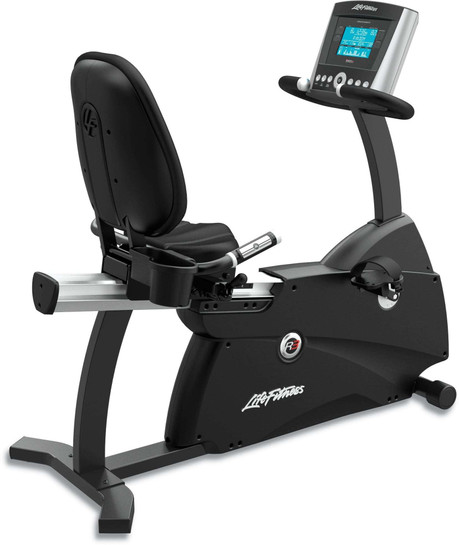What is the difference between a upright bike and recumbent
Breaking Down the Pros and Cons of Upright and Recumbent Bikes: Which One Reigns Supreme?
As someone who is passionate about fitness and staying in shape, I know how important it is to choose the right equipment for your workouts. When it comes to indoor cycling, two of the most popular options are upright and recumbent bikes. But what are the differences between the two, and which one is better for your fitness goals? In this article, I will break down the pros and cons of each type of bike, and help you decide which one is right for you.
Introduction to Upright and Recumbent Bikes
Before we dive into the differences between upright and recumbent bikes, let's take a moment to understand what each of these bikes is.
An upright bike is the traditional style of indoor cycling bike that most people are familiar with. It looks similar to a regular bike, with the pedals positioned underneath the rider's body and the handlebars in front of them. Upright bikes are designed to mimic the feel of riding a road bike, and they provide a great cardio workout.
On the other hand, a recumbent bike has a different design. The pedals are positioned in front of the rider's body, and the seat is positioned lower to the ground, with a backrest for support. The handlebars are located at the sides of the seat, rather than in front of the rider. Recumbent bikes are ideal for those who have back or joint issues, as they provide a more comfortable and low-impact workout.
Understanding the Differences between Upright and Recumbent Bikes
Now that we know what each type of bike is, let's take a closer look at the differences between them.
One of the main differences between upright and recumbent bikes is the position of the rider's body. On an upright bike, the rider is in a more upright position, with their weight distributed evenly across the bike. This position engages the rider's core muscles, as well as their legs and glutes. It also allows for a more intense workout, as the rider can stand up on the pedals to increase resistance.
On a recumbent bike, the rider is in a reclined position, with their weight supported by the backrest. This position is more comfortable and less stressful on the joints, making it ideal for those with injuries or chronic pain. However, it also means that the workout is less intense, as the rider is not engaging their core muscles as much.
Another difference between upright and recumbent bikes is the type of workout they provide. Upright bikes are great for high-intensity cardio workouts, as they allow the rider to increase resistance and speed. Recumbent bikes, on the other hand, are better for low-impact workouts, as they provide a more comfortable and gentle ride.
Benefits of Upright Bikes
Now that we understand the differences between upright and recumbent bikes, let's take a closer look at the benefits of each type of bike. First, let's start with the benefits of upright bikes.
One of the main benefits of upright bikes is that they provide a high-intensity cardio workout. This type of workout is great for burning calories and improving cardiovascular health. Upright bikes also engage the rider's core muscles, which helps to improve posture and stability.
Another benefit of upright bikes is that they are more versatile than recumbent bikes. They allow the rider to stand up on the pedals to increase resistance, which provides a more challenging workout. They can also be used for interval training, which is a great way to improve fitness and burn fat.
Upright bikes are also more compact than recumbent bikes, which makes them a great option for those with limited space in their home gym. They are also more affordable than recumbent bikes, which makes them a great option for those on a budget.
Drawbacks of Upright Bikes
While there are many benefits to using an upright bike, there are also some drawbacks to consider. One of the main drawbacks is that upright bikes can be hard on the joints. The upright position puts more stress on the knees and lower back, which can be uncomfortable for some riders.
Another drawback of upright bikes is that they can be uncomfortable for long workouts. The small seat and upright position can cause discomfort in the back and neck, which can be a problem for those who like to cycle for long periods of time.
Finally, upright bikes are not ideal for those with back or joint issues. The intense workout and upright position can exacerbate existing injuries or conditions, which can make cycling uncomfortable or even painful.
Benefits of Recumbent Bikes
Now let's take a closer look at the benefits of recumbent bikes. One of the main benefits of recumbent bikes is that they provide a low-impact workout. This makes them ideal for those with joint or back issues, as they provide a more comfortable and gentle ride.
Another benefit of recumbent bikes is that they are more comfortable than upright bikes. The reclined position and backrest provide more support for the rider's back and neck, which can make cycling more enjoyable. The larger seat also makes it easier to cycle for long periods of time.
Finally, recumbent bikes are great for multi-tasking. Because they are more comfortable and less intense than upright bikes, they allow the rider to read, watch TV, or use their phone while cycling. This can make the workout more enjoyable and less boring.
Drawbacks of Recumbent Bikes
While there are many benefits to using a recumbent bike, there are also some drawbacks to consider. One of the main drawbacks is that recumbent bikes provide a less intense workout than upright bikes. This means that they are not as effective for burning calories or improving cardiovascular health.
Another drawback of recumbent bikes is that they are less versatile than upright bikes. They cannot be used for interval training or standing up on the pedals, which means that the workout can become monotonous over time.
Finally, recumbent bikes are larger and more expensive than upright bikes, which can be a problem for those with limited space or a tight budget.
Which is Right for You? Factors to Consider
Now that we've looked at the pros and cons of both upright and recumbent bikes, it's time to decide which one is right for you. Here are some factors to consider when making your decision:
- Fitness goals: If your goal is to burn calories and improve cardiovascular health, an upright bike may be a better option. If your goal is to exercise comfortably and gently, a recumbent bike may be a better option.
- Joint and back issues: If you have joint or back issues, a recumbent bike may be a better option, as it provides a more comfortable and low-impact workout.
- Budget and space: If you have limited space or a tight budget, an upright bike may be a better option, as they are more compact and affordable than recumbent bikes.
- Personal preference: Ultimately, the decision between an upright and recumbent bike comes down to personal preference. Try both types of bikes and see which one feels more comfortable and enjoyable to you.
Features to Look for in an Upright or Recumbent Bike
Once you've decided which type of bike is right for you, there are several features to look for when choosing a specific model. Here are some features to consider:
- Resistance levels: Look for a bike with multiple resistance levels, so you can increase or decrease the intensity of your workout.
- Adjustable seat and handlebars: Look for a bike with an adjustable seat and handlebars, so you can find the most comfortable riding position.
- Console: Look for a bike with a console that displays your workout stats, such as speed, distance, and calories burned.
- Heart rate monitor: Look for a bike with a heart rate monitor, so you can track your heart rate and make sure you're staying within your target heart rate zone.
- Quiet operation: Look for a bike with a quiet operation, so you can cycle without disturbing others in your home.
Popular Upright and Recumbent Bike Brands
There are many bike brands to choose from, but here are some of the most popular brands for upright and recumbent bikes:
- Upright bike brands: Schwinn, ProForm, Sole Fitness, NordicTrack, and Diamondback Fitness.
- Recumbent bike brands: Nautilus, Schwinn, Exerpeutic, Marcy, and Stamina.
Conclusion: Making the Right Choice for Your Fitness Goals
In conclusion, both upright and recumbent bikes have their pros and cons, and the right choice depends on your fitness goals, personal preference, and any joint or back issues you may have. When choosing a specific bike model, look for features such as adjustable resistance, seat and handlebars, and a console with workout stats. And remember, the most important thing is to find a bike that you enjoy using and that helps you achieve your fitness goals.


